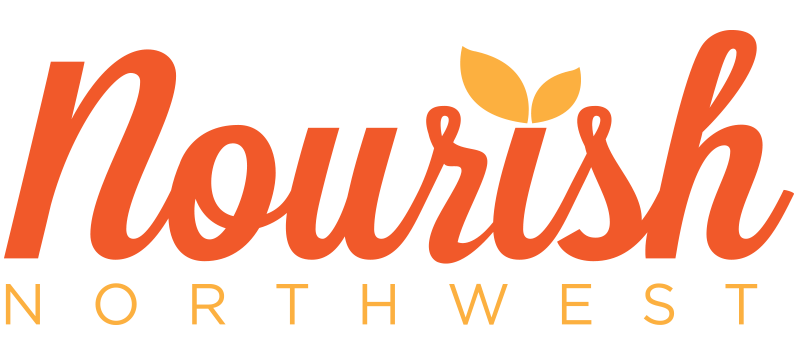Sit at a Desk 40 hours a Week? Read This!
Post by Christy Johnson, Personal Trainer and Group Fitness Instructor at Nourish Northwest
Postural Distortion Patterns Explained
Many of us these days end up sitting behind a desk staring at a computer for 40+ hours a week, unfortunately, that is the nature of many of our jobs and it’s hard to avoid. In addition to that, we also sit in the car, sit on the couch to watch TV/read, and sit to eat meals, but what does all this sitting do to us? After hours of sitting, week in and out, year after year, it becomes a pattern that can lead to many bodily aches and pains. If we don’t spend time unwinding our body from sitting all day, the aches and pains will only get worse!

Below is a (semi) short and sweet explanation of Upper-Crossed Syndrome and Lower-Crossed Syndrome, two postural patterns you may be suffering from. Both of these patterns are exacerbated by a “sitting” lifestyle. Before we get in to explanations of Upper-Crossed and Lower-Crossed, it’s best to also understand the terms “overly-facilitated muscle” and “inhibited muscle.”
Overly-Facilitated muscle = “turned on”/shortened/over-active
Inhibited muscle = “turned off”/lengthened/under-active
Lower-Crossed Syndrome
What it looks like: Top of the pelvis is tilted forward/”booty pop”; low back curve “belly out”
Overly-Facilitated Muscles: (“turned on”)
Hip flexors (muscles in front of hips/pelvis), Rectus Femoris (front of thigh)
Latissimus dorsi, Quadratus Lumborum, spine extensors (these are all muscles in your back)
Inhibited Muscles: (“turned off”)
Gluteus Maximus/Medius/Minimus (butt, side of hip)
Abs/Obliques (stomach)
Can lead to:
“Tight” (spasming) hamstrings and weak glutes. (The hamstrings are compensating for weak glutes. Weak glutes can lead to many other compensations and injuries, and should be a blog post on its own!)
Low back pain/Poor posture
IT Band pain a.k.a. runner’s knee
Upper-Crossed Syndrome
What it looks like: Head/neck juts forward, shoulders are elevated/ rounded forward, upper back curved/”hunchback”
Overly-Facilitated Muscles: (“turned on”)
Pectorals (front of shoulder/chest)
Upper trapezius/Levator Scapulae/Scalenes (upper back, back of neck)
Inhibited Muscles: (“turned off”)
Cervical flexors (front of neck)
Rhomboids/Mid/Lower Trapezius (mid/lower back)
Leads to:
Shoulder instability/injury/pain
Neck pain/stiffness
Headaches
What Should I do???
For both of these postural distortion patterns, follow these basic guidelines:
- Release/relax the overly-facilitated muscles.
- Strengthen/fire the inhibited muscles.
Release techniques include trigger point therapy, foam rolling, and massage. It is always best to release the overly-facilitated muscles first, then immediately fire the inhibited muscles! Over time this will help bring your posture and body back to balance, and hopefully help with any nagging aches and pains!
If you are confused, or think this is too much to take in yourself, to get releasing/strengthening ideas you can always ask a personal trainer for help; another healthcare professional like a chiropractor or a massage therapist would also be a great resource.
Happy releasing and strengthening everybody!



